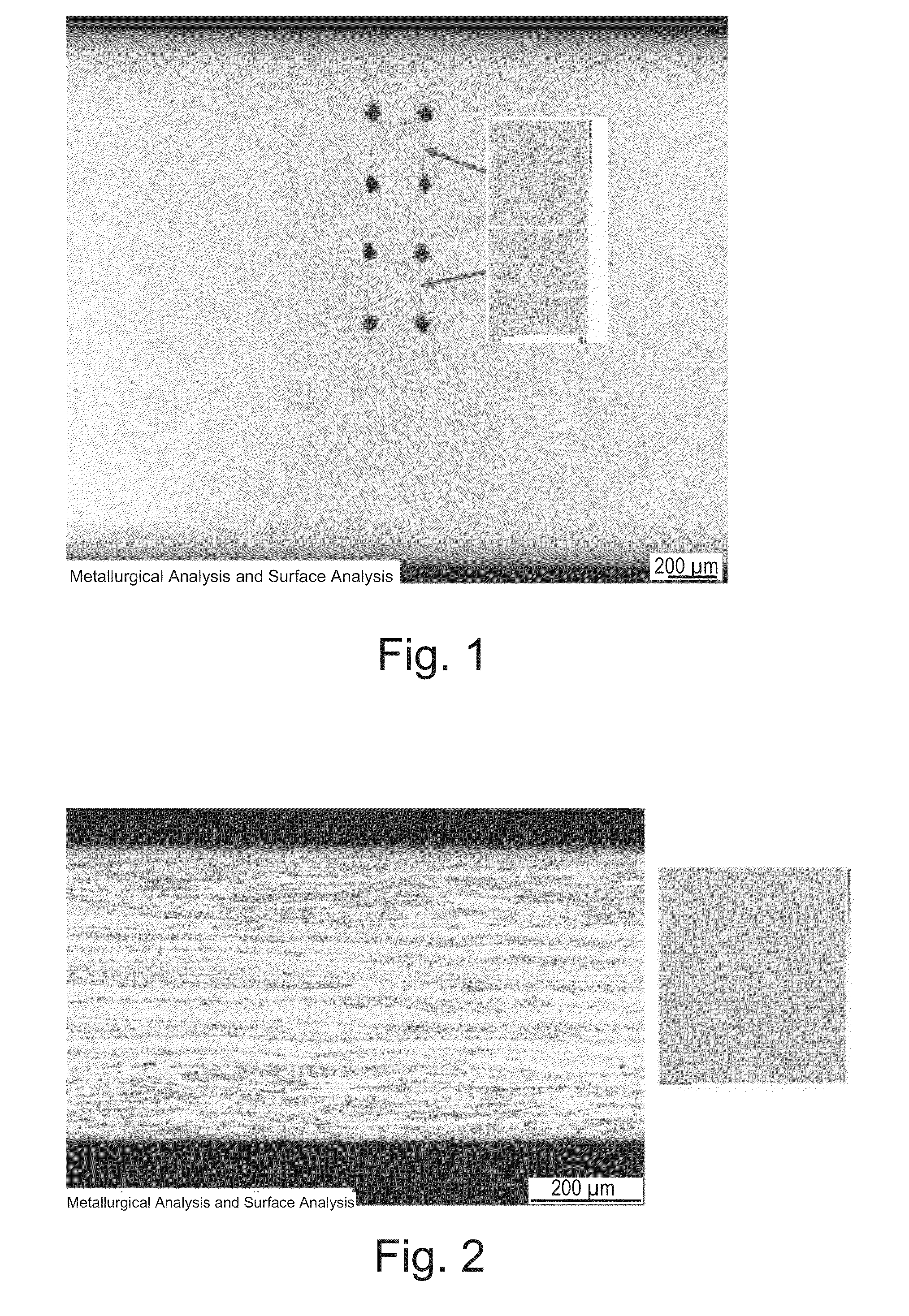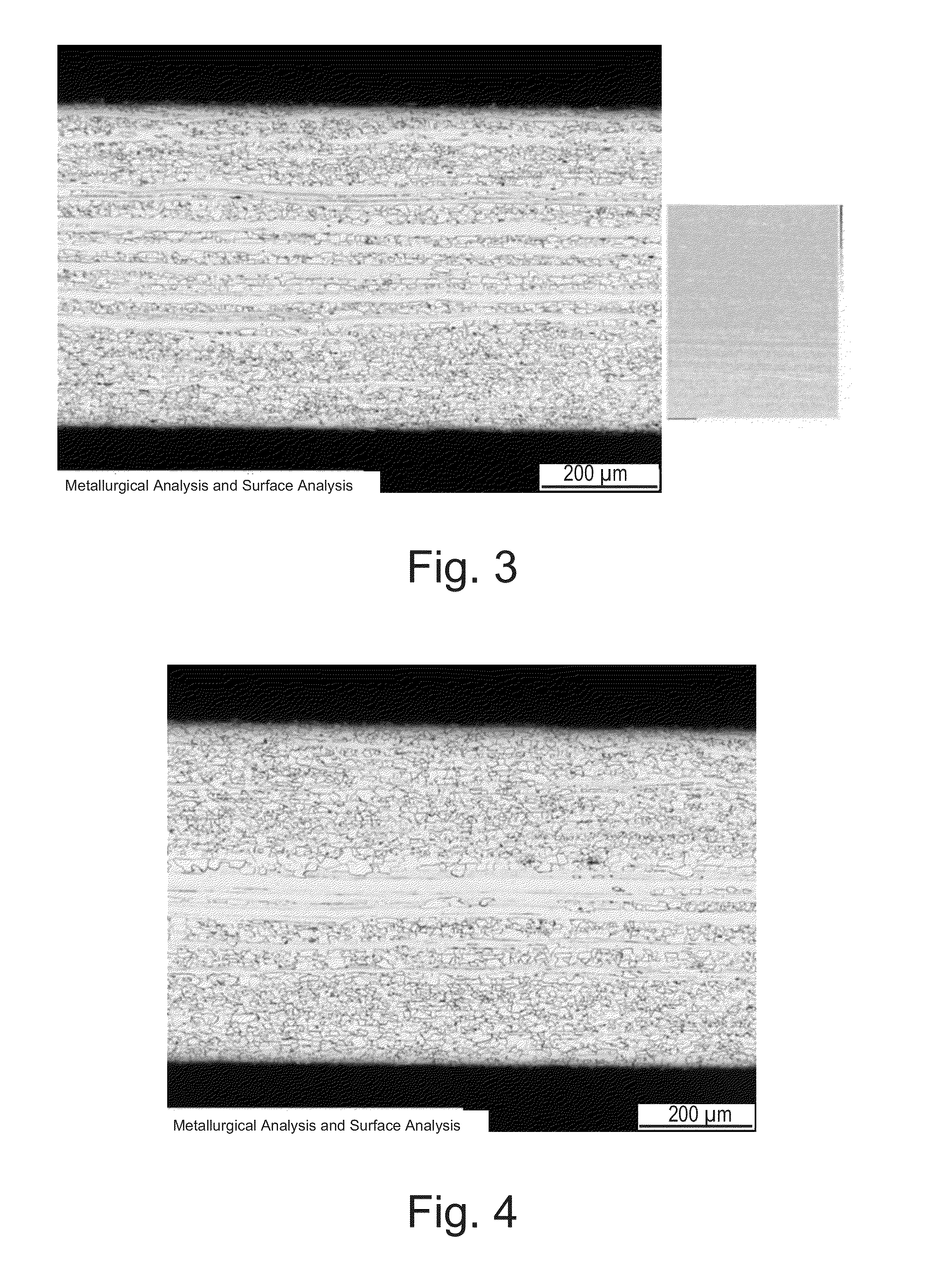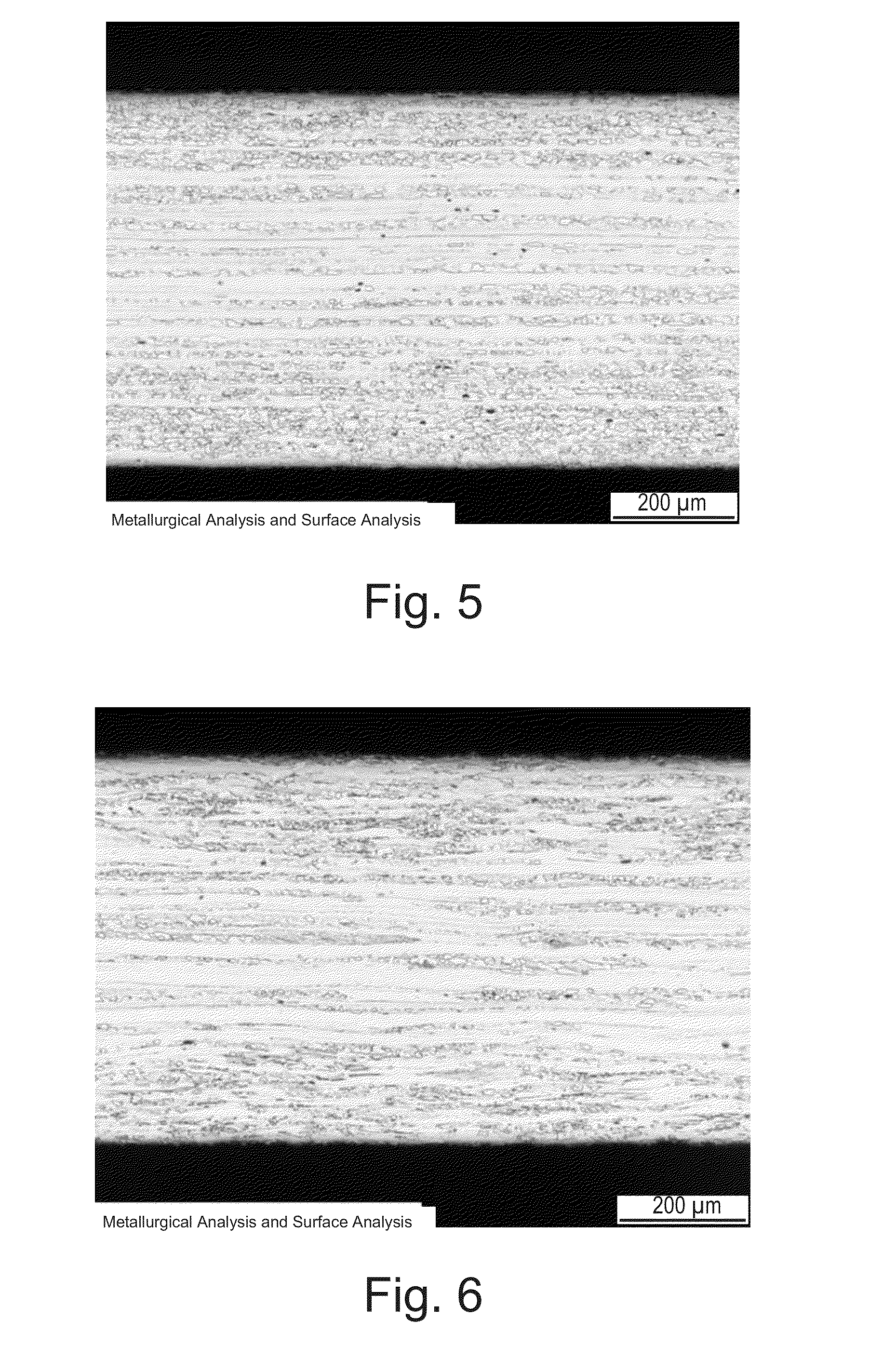Method for producing a non-grain-oriented higher-strength electrical strip and use thereof
a technology of electrical strips and grain-oriented materials, which is applied in the direction of magnetic circuits, furnaces, magnetic bodies, etc., can solve the problems of failure of rotor materials, and achieve the effect of good magnetic properties and high material strength
- Summary
- Abstract
- Description
- Claims
- Application Information
AI Technical Summary
Benefits of technology
Problems solved by technology
Method used
Image
Examples
example 1 (fig.4)
EXAMPLE 1 (FIG. 4)
[0048]ReH>550 MPa
[0049]Degree of recrystallization <90%
[0050]The hot strip is produced as described above and the reel temperature is 720° C. The resulting hot strip is then subjected to a cold deformation in a continuous cold-rolling process, producing a cold strip; the degree of cold deformation is 70%. The cold strip thickness is 0.65 mm.
[0051]The resulting strip or the stamped parts produced from this strip is / are then annealed at 680° C. for 150 s. The chemical analysis of the strip in this case is:[0052]C 0.0031 mass %[0053]Si 2.34 mass %[0054]Al 1.03 mass %[0055]Mn 0.27 mass %[0056]P 0.013 mass %[0057]S 0.006 mass %
[0058]In this case, it was possible to achieve the following mechanical properties:
Mechanical:Reh (transverse):571MPaRm (transverse):623MPaA80:18.8%Magnetic:P15:6.7W / kgJ50:1.66T
example 2 (fig.7)
EXAMPLE 2 (FIG. 7)
[0059]ReH>600 MPa
[0060]Degree of recrystallization <75%
[0061]The hot strip was produced as described above and reeled at 660° C.; then the hot strip was continuously rolled into a cold strip in a cold-rolling process; the degree of cold deformation was 83% and the cold strip thickness was 0.35 mm. The stamped parts were annealed at a finish annealing temperature of 670° C. for 150 s.
[0062]The chemical analysis of this strip was:[0063]C 0.0039 mass %[0064]Si 3.11 mass %[0065]Al 0.92 mass %[0066]Mn 0.43 mass %[0067]P 0.014 mass %[0068]S 0.007 mass %
[0069]With this procedure, it was possible to achieve the following properties:
Mechanical:Reh (transverse):633MPaRm (transverse):672MPaA80:18.97%Magnetic:P15:6.7W / kgJ50:1.64T
example 3 (fig.8)
EXAMPLE 3 (FIG. 8)
[0070]ReH>650 MPa
[0071]Degree of recrystallization <20%
[0072]The corresponding hot strip was produced as described above and reeled at 660° C. The resulting hot strip was then continuously cold-rolled with a degree of cold deformation of 77% and an achieved cold strip thickness of 0.5 mm. The annealing duration was 150 s at a finish annealing temperature of 650° C.
[0073]The chemical analysis of the strip in this case was:[0074]C 0.0027 mass %[0075]Si 2.35 mass %[0076]Al 1.03 mass %[0077]Mn 0.53 mass %[0078]P 0.148 mass %[0079]S 0.004 mass %
[0080]With this procedure, it was possible to achieve the following properties:
Mechanical:Reh (transverse):742MPaRm (transverse):779MPaA80:5.3%Magnetic:P15:8.9W / kgJ50:1.59T
[0081]The individual examples and particularly also the figures show the recrystallization gradient that was achieved by means of the annealing duration, but that can also be achieved with a shortened annealing duration and a higher temperature; these can also ...
PUM
| Property | Measurement | Unit |
|---|---|---|
| Temperature | aaaaa | aaaaa |
| Temperature | aaaaa | aaaaa |
| Fraction | aaaaa | aaaaa |
Abstract
Description
Claims
Application Information
 Login to View More
Login to View More - R&D
- Intellectual Property
- Life Sciences
- Materials
- Tech Scout
- Unparalleled Data Quality
- Higher Quality Content
- 60% Fewer Hallucinations
Browse by: Latest US Patents, China's latest patents, Technical Efficacy Thesaurus, Application Domain, Technology Topic, Popular Technical Reports.
© 2025 PatSnap. All rights reserved.Legal|Privacy policy|Modern Slavery Act Transparency Statement|Sitemap|About US| Contact US: help@patsnap.com



